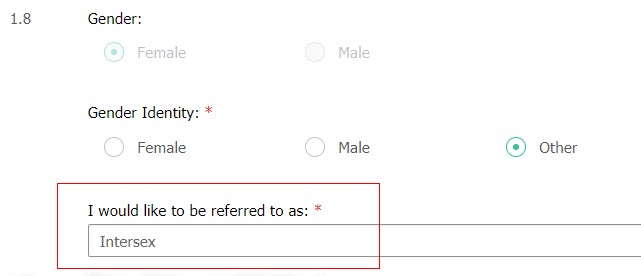Since the introduction of the Gender Recognition Act in 2004, there has been a progression in the way gender recognition and identity are respected. However, many healthcare organisations are still struggling with outdated systems. With this in mind, fertility clinics can offer progressive support through improving compassion, care and respect when it comes to gender recognition and identity.
The struggles of gender recognition
The process of legally changing your gender in the UK is not one that is easy. In fact, many people believe it is dehumanising, gruelling and intrusive.
In order to legally change gender, the individual must first be medically diagnosed by a doctor with the condition ‘gender dysphoria’. After a confirmed diagnosis, individuals must also be living as their chosen gender for two years. Furthermore, they must meet specific criteria and then face a panel of independent judges who can then decide if they warrant legal recognition.
‘I am what I say I am.’
Many people think that people should not only be able to decide for themselves which gender they associate with but that they must also be treated with respect. At the moment, the gender recognition process does not offer respect, understanding and the power of decision making.
Preserving fertility with gender reaffirming treatment
In a similar case, the Equality and Humans Rights Commission (EHRC) are threatening legal action against the NHS. This is because the EHRC claim the NHS discriminates against the transgender community as transgender patients have reduced access to fertility services. NHS bodies can choose whether or not to offer services to transgender patients.
Disparity lies in the fact that other patients who receive medical treatment such as those undergoing chemotherapy will routinely be offered fertility treatment. However, there is little guidance for those who receive gender reaffirming treatment.
This is especially true for young transgender people who are facing the challenge of potentially life-saving gender reaffirming treatment alongside the confusion of whether they may want a biological family of their own in the future.
How fertility clinics can support gender identity
Fortunately, there is plenty of support and guidance for fertility treatment for trans and non-binary people from the Human Fertilisation and Embryology Authority. However, fertility clinics can do more to help their patients through the terminology and identity labels they use.
There are many different terms that people may want to use to describe their identity and supporting the terms people want to use can help to show understanding and respect. It is believed the next Census of England and Wales in 2021 will offer more terminology and improved information on gender identity and sexuality. So, it is crucial that medical services, such as fertility clinics, follow suit to achieve equality for all patients.
However, to ensure fertility clinics can be respectful, the correct information needs to be collated. Already the HFEA offer gender-neutral forms for patients. However, clinics can go one step further by actively asking patients and their partners how they wish to be referred to. This information should be confirmed, stored and easy to find so that staff can always treat patients with respect throughout their treatment.
Fertility clinics need to ensure that gender identity respect goes beyond just the initial form. It should continue throughout all face-to-face communication and electronic communication to show respect, awareness and not to cause offence.
Inaccurate information can be offensive and hurtful, so it is essential clinics can correctly store and recall the information for every patient interaction. Remember, for some people they may not be sure which label they best identify with, and this may change throughout the course of treatment.
Fertility clinics can help to support their patients by encouraging communication as well as making staff aware of any changes in preferences as well as the name and pronoun they feel best suits them.
How Fertility Consent approaches gender recognition
We believe the best approach for Fertility Consent is to let the patient / partner decide how they wish to be referred to, rather than provide a list of ‘labels’ to pick from.

By recording their preference staff can see this on their dashboard and can then ensure all face-to-face communication and electronic communication (forms, emails) respects the patient / partner’s choice.


